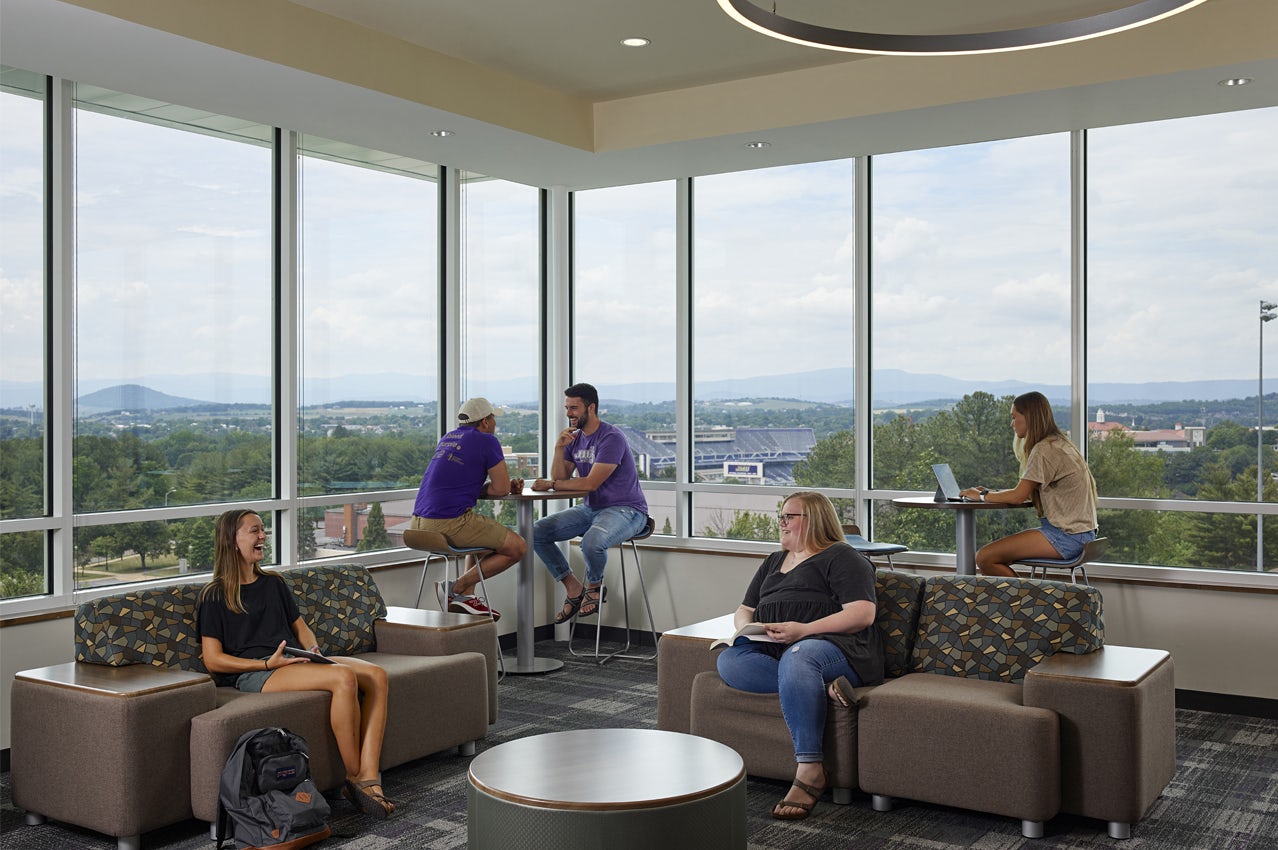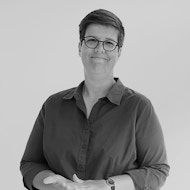VMDO is pleased to announce that James Madison University’s Paul Jennings Hall has won the 2023 Livable Buildings Award. The juried award, administered by the University of California Berkeley’s Center for the Built Environment (CBE), is given annually to the single project that best exemplifies design, sustainability, and occupant satisfaction as measured through CBE’s industry-leading post-occupancy survey. Jennings Hall is the third VMDO project that has achieved this honor in the past four years. Our previous winners include Discovery Elementary School (2021) and Bluestone Elementary School (2019). This year also marks a milestone for both the VMDO and the program as Jennings Hall is the first residential project—of any kind—to achieve the award.

In the time between the post-occupancy surveys for Bluestone Elementary School and Jennings Hall, VMDO has conducted 16 post-occupancy surveys with over 1,300 respondents participating. It gives us a unique perspective on what distinguishes these winning projects—or put another way, why these occupants are so happy.
People first. A common thread running through Discovery, Bluestone, and Jennings Hall is that these are facilities designed to support vulnerable populations—children in the early stages of their development, and young adults that, as a group, struggle with high levels of social isolation, anxiety, and depression. The winning projects began with strategies that support health and well-being: abundant daylight and views, fresh air, and thermal and acoustic comfort. Spaces are designed to foster community, encourage connection, and reinforce a sense of identity, safety, and inclusion. These typology-agnostic values drove decision-making, from the initial parti diagram to the HVAC system design to the final material selections. Their success shows the importance of an integrated design process, and of articulating clear goals and values at the project’s outset—both strategies commonly discussed in terms of sustainability outcomes but that are just as powerful for occupant experience.

Leadership matters. Much of what drives post-occupancy scores is culture, which is outside of the design team’s control. All three of these projects have a sense of shared community and identity, cultivated by strong leadership by either the school principals (Dr. Erin Russo at Discovery, Anne Lintner at Bluestone (now retired)) or by the residence life staff at James Madison University. These leaders helped shape the design of the buildings so that they accommodated the unique needs of their communities. Because they helped shape the buildings, these leaders could help their staff understand how to make best use of their surroundings. Thus, while culture and identity can be supported through buildings—for example, by creating learning neighborhoods or through environmental graphics/wayfinding—social cohesion, psychological safety, and a sense of shared purpose are the product of leadership, not design. Many of the strategies used in these winning projects have been used in other surveyed projects, but those projects have not scored as high in part because of changes in leadership or other management factors that are well beyond the design team’s control. Seeing the range in POE results emphasizes the importance of engaging leadership early and deeply and of educating occupants throughout the design process.
 Expectations drive satisfaction. All three of these projects are new buildings in systems that contain a lot of older building stock. If a respondent’s baseline expectation is exceeded, projects score exceptionally well. For example, Jennings Hall is adjacent to other residence halls that are at the end of their renovation cycle, so occupants compare their experience to those of their peers in other facilities. Same goes for teachers at Bluestone and Discovery, who compare their experiences to those of their peers teaching in older and/or prototype-based facilities that don’t take advantage of light and views. The reverse is also true: when conditions don’t measure up to occupant expectations, scores fall. As an example, Bluestone Elementary uses an innovative open classroom design. Teachers who expected to be assigned to a more traditional classroom gave very low satisfaction scores because they were trying to teach as if they were in a traditional classroom. Those who wanted to be in the open classrooms, and took advantage to teach differently, gave high satisfaction scores. In the last few years, where possible we have been using the custom POE we have developed with CBE as a pre-occupancy survey to gauge the priorities and expectations of occupants at the outset of design.
Expectations drive satisfaction. All three of these projects are new buildings in systems that contain a lot of older building stock. If a respondent’s baseline expectation is exceeded, projects score exceptionally well. For example, Jennings Hall is adjacent to other residence halls that are at the end of their renovation cycle, so occupants compare their experience to those of their peers in other facilities. Same goes for teachers at Bluestone and Discovery, who compare their experiences to those of their peers teaching in older and/or prototype-based facilities that don’t take advantage of light and views. The reverse is also true: when conditions don’t measure up to occupant expectations, scores fall. As an example, Bluestone Elementary uses an innovative open classroom design. Teachers who expected to be assigned to a more traditional classroom gave very low satisfaction scores because they were trying to teach as if they were in a traditional classroom. Those who wanted to be in the open classrooms, and took advantage to teach differently, gave high satisfaction scores. In the last few years, where possible we have been using the custom POE we have developed with CBE as a pre-occupancy survey to gauge the priorities and expectations of occupants at the outset of design.

Measurement is everything. We wouldn’t know any of this if we weren’t staying with our projects and learning from them. Post occupancy surveys have helped us identify ways to improve existing projects, often through changes in operations and maintenance protocols or occupant education. It has shaped the way we design new projects, by listening to the experience of those using our spaces every day.
 Post occupancy surveys provide a qualitative balance to the often quantitative information we collect on energy and water use. In the end, architecture is about helping people (and the planet) thrive; that’s why the Livable Buildings Award means so much to us.
Post occupancy surveys provide a qualitative balance to the often quantitative information we collect on energy and water use. In the end, architecture is about helping people (and the planet) thrive; that’s why the Livable Buildings Award means so much to us.

